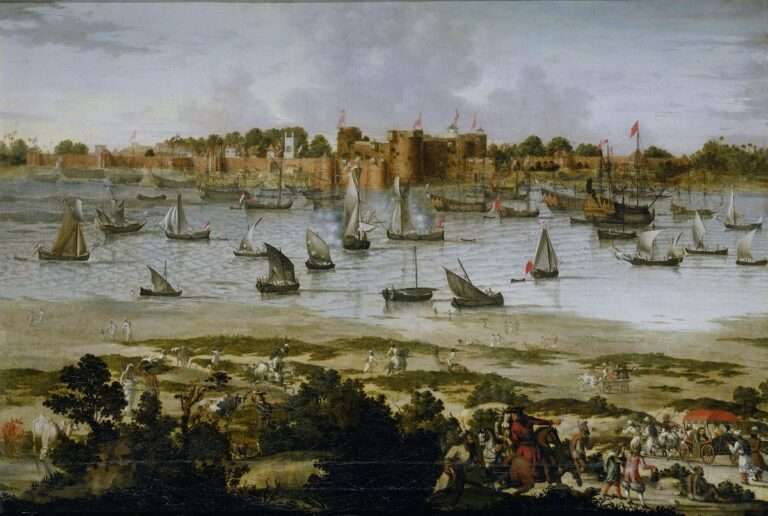Last year we had the pleasure of working with Frans Wiering and a large group of enthusiastic students from his Designing Interactive Systems course at the University of Utrecht. Ontwerpen van Interactieve Systemen (OIS) introduces Bachelor of Information Science, Game Technology, and Computer Science students to human-centred design: designing systems that closely match the activities, wishes and values of users and clients. We had heard that Frans was looking for design assignments for his students from non-profit organisations to give them an opportunity to develop their knowledge and skills in a real-world setting. The GLOBALISE project, in turn, was at the stage where we were just beginning to formulate the goals and principles on which our research portal would be built over the next several years – so we were happy to collaborate.
To start off, we prepared a two-page overview of the GLOBALISE project, the kinds of historical sources the students could expect to find in the VOC dataset, the work we were already doing to transcribe and curate these source, the kinds of questions and challenges they would need to address, as well as some more background material (papers, websites, demos) for extra inspiration and context. We then met in Amsterdam to give them an opportunity to interview us and ask follow-up questions. Over the following weeks the students (divided into four independent teams of c. 3-4 members each) shared several iterations of their proposed solutions with us in Amsterdam, incorporated our feedback, and finally presented mock-ups of their final prototypes to us in Utrecht. After the presentations, Frans Wiering, Lodewijk Petram, and myself then had the pleasure of picking the ‘winning team’ who had, in our view, best navigated this (really quite difficult!) set of challenges.
Innovative solutions for the GLOBALISE research portal
Below are screen videos of the four final presentations by the OIS students. What struck us most, in retrospect, and what made the whole exercise worth it to us, is that (despite their very different approaches) we were able to take away something useful from all the prototypes for the GLOBALISE research portal. To give just one example: while we had already anticipated that due to emphasis exploring and searching the VOC texts for entities and events, we would need to pay special attention to how researchers would be able to select and display these. Then one of the student groups pointed out that if a researcher is searching for something that incorporates an event (e.g. a ship departing from Batavia with a certain cargo) then why not highlight in the results a list of all events matching these criteria (with links to the relevant pages), rather than a list of pages containing these events (with links to the relevant events)? Not all types of searches need to return pages. This was an excellent suggestion and one we will try to implement in the research portal.
Several other clever, interesting (and also interestingly impractical!) suggestions were made in each of the student presentations. We’ve linked the videos of their final presentations below. Can you guess which presentation we awarded as the winner? Please note: the videos below are between 25 and 60 MB in size. All are being made available under a CC BY 4.0 license.
In summary, working with the Utrecht OIS group was a pleasure, and an inspiration, and something we can recommend to any digital humanities project in the Netherlands.
The students in the four teams participating in the project were:
- Guus van Hout, Chouaib Hussein, Berend van den Broek, Ilker Ermurat, Joep Vermeer, Luuk Berkers
- Laurens Jordense, Emre Süs, Kizi Huijsman, Merlin Raymond, Jurre de Vries, Joost Kootstra
- Rijk Heere, Gun Chen, Kim van Dalen, Reinier Verkleij, Micha Jenniskens
- David Harmsen, Zena van Summeren, Lynne van Beelen, Floris Smit, Sjors Vlasblom, Tobias Buiten
Thank you all for your hard work. And thanks to Merve Tosun for setting up the collaboration.

